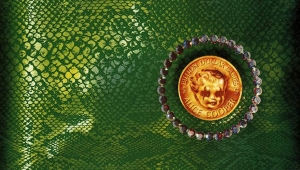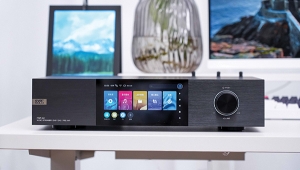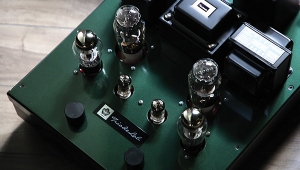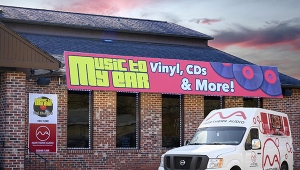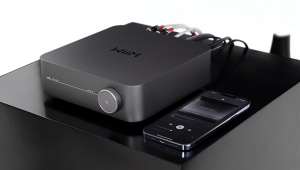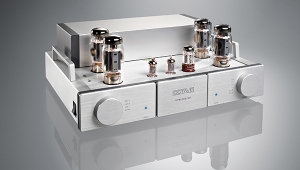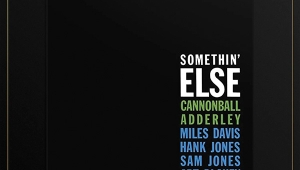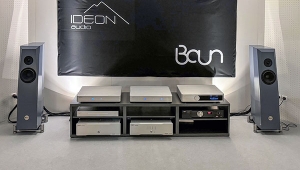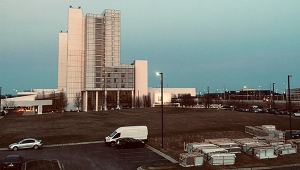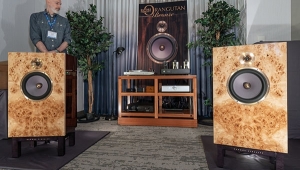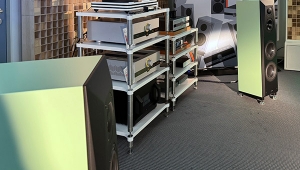| Columns Retired Columns & Blogs |
Rediscoveries #7: Harold Land's The Fox from Craft Recordings and Acoustic Sounds
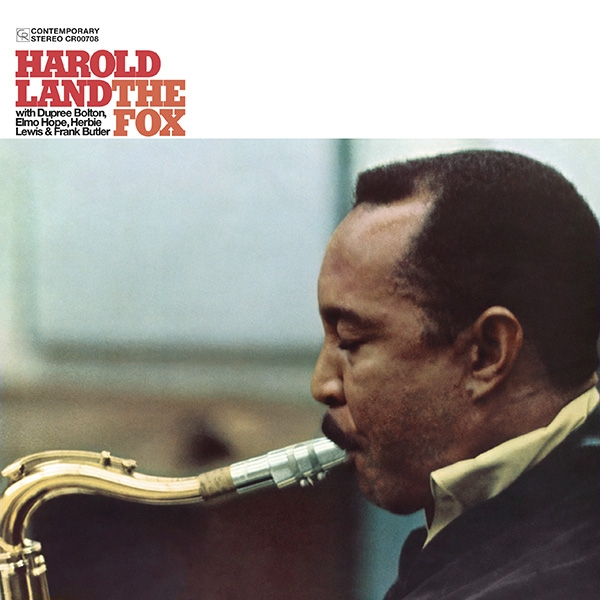
Most of the 1950s Contemporary Records catalog is the bullseye of "West Coast Jazz," a smoother, more laid-back flavor than the hard bop and soul jazz styles percolating back east. Set in that context, tenor saxman Harold Land's The Fox stands out for its aggressive speed and punch. Its style would seem more at home on Blue Note or Prestige.
Footnote 1: See tinyurl.com/mrnujcx5.
Read the back notes on the beautifully packaged new reissue from Craft Recordings and Acoustic Sounds and clarity emerges. The Fox wasn't born in Contemporary's studio/shipping room. Instead, it was laid to tape at Radio Recorders, Studio B, Los Angeles, in August 1959. It was the first record produced by David Axelrod, who would become a fixture at Capitol Records. It was released by short-lived label Hifijazz (footnote 1). Contemporary reissued it in 1969, and it has rarely been out of print since.
This latest reissue is all-analog, cut from the master tapes by Bernie Grundman. Pressed at Quality Record Pressings in Salina, Kansas, my copy arrived with quiet surfaces, crisp dynamics, and the kind of undistorted, realistic sound I expect from a Radio Recorders recording in combination with a Grundman cut. It is a rollicking, satisfying spin. How does the new reissue compare with what's out there on the streaming scene? The only streaming version I found was 16/44.1, from the old Original Jazz Classics CD. Hopefully, Grundman made an HD transfer so that Craft (part of Concord Music Group) will be able to release it to stream.
The Fox didn't include any of Contemporary Records' usual suspects (Shelly Manne, LeRoy Vinnegar, Andre Previn, Barney Kessel, and so on). Instead, it features the debut session by hot-playing trumpeter Dupree Bolton, who had no trouble keeping pace with seasoned bopper Land and pianist Elmo Hope, who was based in Los Angeles at the time, having been barred from performing in NYC for drug-related legal problems. Herbie Lewis's bass and Frank Butler's nimble drums push things along as well as the best Blue Note rhythm sections. Sadly, problems with drugs and stints in prison derailed Bolton's career; he didn't record again until 1963 on the super Curtis Amy album Katanga!, after spending most of the intervening time behind bars (footnote 2). Hope died of drug-depleted bad health in 1967, aged 43. As bad as things would turn for Bolton and Hope, they played to their fullest potential on The Fox. Land and the rhythm section played to their usual high standard.
The album came together after Land, Hope, and Butler spent time playing in bassist Curtis Counce's band. Land and Butler played on You Get More Bounce with Curtis Counce!, a Contemporary album as famous for its cover as its music (footnote 3). After hearing Bolton play in a Los Angeles club, Land enlisted him for the album.
In Radio Recorders' Studio B, the group laid down six tracks, four written by Hope and two by Land: the title cut and "Little Chris," named for his then-young son Harold Christopher Land, now a jazz pianist who played in Gerald Wilson's band and is still active in the L.A. scene. The title track is 12-bar blues on speed, requiring extra-strength chops to enunciate the breakneck note flow. It's akin to the typical Brown and Roach opener (Land played in their quintet), and this group runs through it like Olympic sprinters.
In the 1969 liner notes, Land told Leonard Feather, "Elmo was equally talented as a soloist and composer, but with a difference. He expresses things in his writing you don't hear in his playing. ... Elmo truly had a touch of genius. I was in awe of him." Hope's tunes on The Fox range from the fast and popping "Sims A-Plenty" (propelled by Butler's excellent stick work) to the moody "Mirror-Mind Rose." The latter recalls a rainy night in a film noir setting. The side A closer, "One Second, Please," is another bopper with Land's legato playing nicely contrasted by Butler's pecking beats. The album closer, "One Down," has a Latin flavor to the beat and a skeletal chord structure laid down by Hope, with wide latitude for Bolton and Land to settle in and blow extended solos. Hope's solo in the middle is in jagged contrast to the shuffling rhythm behind it.
At the time of the recording, Land was an established tenor player with a solid resume of recordings. He probably would have been a jazz star in New York, but he chose to settle in L.A. in 1955 after leaving the Brown–Roach band to attend to family matters. Before he left, Land was a great counterpoint to Brown's trumpet and wasn't fazed by the quick turns and breakneck runs common to the group. He played on all but the band's final album. His replacement, Sonny Rollins, handled the sax duties on Clifford Brown and Max Roach at Basin Street, a studio recording despite the title.
Land remained L.A.-based for the rest of his life. His recording debut as leader was for Contemporary, in 1958. After The Fox, he made records for Riverside/Jazzland, Blue Note, Atlantic, Chess/Cadet, Concord, and other labels. In the 1960s, he transitioned from a Charlie Parker–based bebop sensibility toward John Coltrane's style, always with his own voice. He was a professor in the UCLA Jazz Studios program, joining in 1966 at the behest of director Kenny Burrell. He died of a stroke in 2001, age 72 (footnote 4).
Summing up The Fox, Land told Feather, "The session has always loomed large in my mind as an important event."
Footnote 1: See tinyurl.com/mrnujcx5.
Footnote 2: Katanga! was discussed in 2021 in Analog Corner #315.
Footnote 3: See tinyurl.com/mj49akkj.
Footnote 4: The New York Times obit is at tinyurl.com/zz8ddz5y.
- Log in or register to post comments

